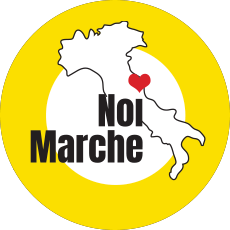The village
At 354 m. above sea level, this town is located in a wide valley, between the confluence of the Fosso di Braccano with the Esino. Center of Piceno origin, of which necropolis have recently been found in the municipal territory, it then developed as a Roman municipium in the 1st century AD. C .. Episcopal seat since the fifth century it was subsequently submitted to the Duchy of Spoleto and to the Lordship of the Ottoni until 1578. It was an important center for the production and processing of woolen cloths. In the immediate post-war period, many industrial activities developed (in particular of garments and metalworking). Its territory, due to its position and its climate, is renowned for the production of Verdicchio, a doc white wine.
Strolling
The historic center of Matelica stretches along the main axis formed by Corso, surrounded by over 50 alleys and 10 small squares. Some alleys are concentrated near ancient "industrial" areas. For example, there are six Vicoli Cuoio (numbered from I to VI) near the area where tanneries used to be, and there are six Vicoli Cafasso (also numbered from I to VI) in an area that was once adjacent to a ditch. The alleys and small squares offer picturesque views and corners that are worth capturing in photos, allowing the imagination to travel back to a time when craftsmanship was thriving. In the central Piazza E. Mattei, the main buildings and monuments of the city can be found: the Palazzo del Governo (13th century), the Torre Civica (12th century) standing at 32 meters high, the Loggia del mercato (16th century), the Palazzo Municipale, the central fountain, and the Church of Suffragio. It is a classic Renaissance square with buildings that symbolize political, religious, and economic power overlooking the city's main square.
The Palazzo Municipale underwent a radical restoration in 1844, assuming its current appearance. Inside, there is the plaque of Caio Arrio (a Roman general in charge of the Municipium) and a painting by Salvator Rosa (1615-1673). On the right is Palazzo Ottoni, dating back to 1472. The palace was commissioned by the Ottoni family, which held power in Matelica from 1394 to 1578.
The octagonal white stone fountain dates back to 1587. The basin is adorned with four statues of sea deities (known in the local dialect as Biutinu, Maccagnanu, la Sirena, la Veloce). The famous "Patente da mattu" (Crazy License) is associated with the central fountain, which is a local tradition. According to this tradition, one only needs to make seven turns around the fountain to receive a humorous certificate from the Pro Loco association. It is a playful ritual associated with Matelica, known as the "city of the crazy," although the origin of the nickname remains unknown.














